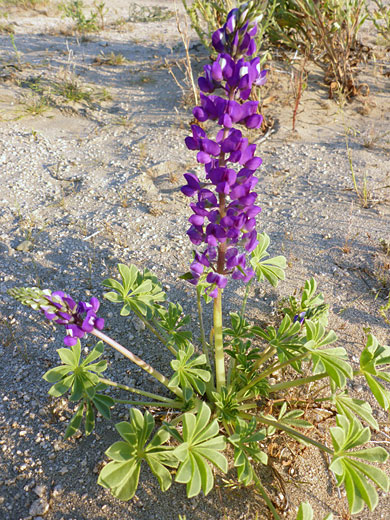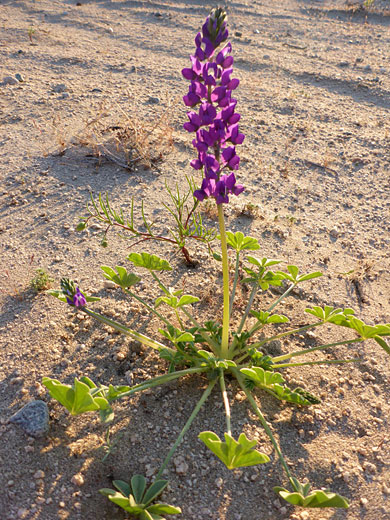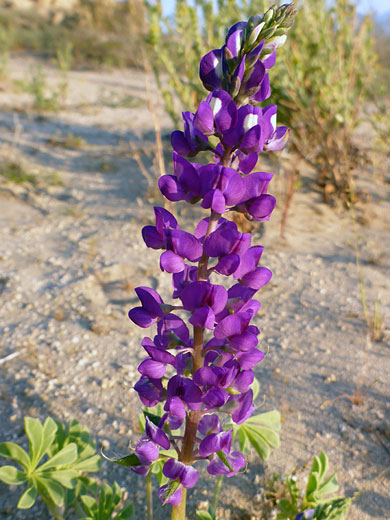Common name:
Mojave lupine
Family:
Scientific name:
Lupinus odoratus
Main flower color:
Range:
South California, northwest Arizona and northwest Nevada
Height:
Up to 12 inches
Habitat:
Gravel or sandy locations in deserts; between 2,000 and 5,000 feet
Leaves:
Divided into 7, 8 or 9 obovate or oblanceolate leaflets, up to 0.8 inches long and 0.3 inches wide; on long stalks
Season:
March to May
Stems and leaves of lupinus odoratus are usually hairless at the flowering stage, though young plants generally have a sparse hair covering. The bright, yellowish-green leaves are basal, arranged in a rosette with the stalks (up to 5 inches long) angled outwards, close to the ground. Leaflets are comparatively broad, with the widest point quite near the tip.
Flowers are dark pink to violet, around a third of an inch long, produced in an elongated cluster along the upper half (up to 6 inches) of a leafless stalk. The center of the banner petal is white or pale yellow, becoming purple when mature. The calyces may have a few hairs on the tips but are otherwise hairless; they are divided into a rounded or shallowly toothed upper lip and a slightly longer lower lip. Fruits are broad, flattened, oblong pods up to 1 inch in length, with long hairs along the margins.
Flowers are dark pink to violet, around a third of an inch long, produced in an elongated cluster along the upper half (up to 6 inches) of a leafless stalk. The center of the banner petal is white or pale yellow, becoming purple when mature. The calyces may have a few hairs on the tips but are otherwise hairless; they are divided into a rounded or shallowly toothed upper lip and a slightly longer lower lip. Fruits are broad, flattened, oblong pods up to 1 inch in length, with long hairs along the margins.
All Contents © Copyright The American Southwest | Comments and Questions | Contribute | Site Map





